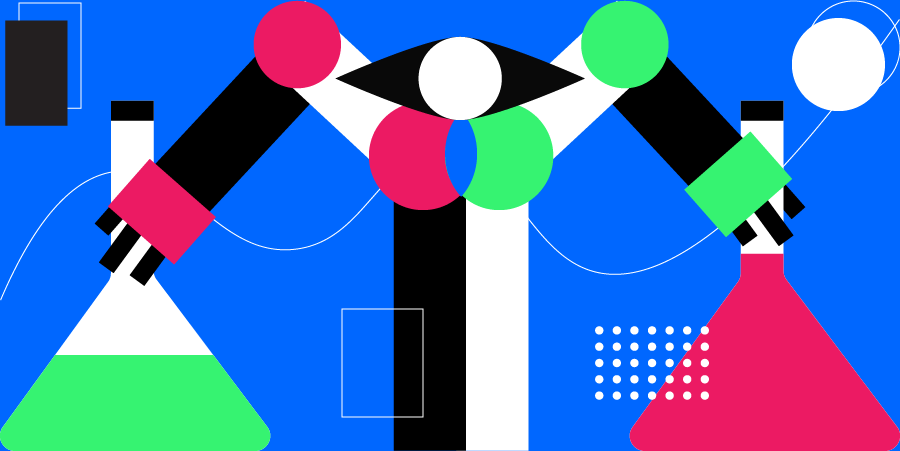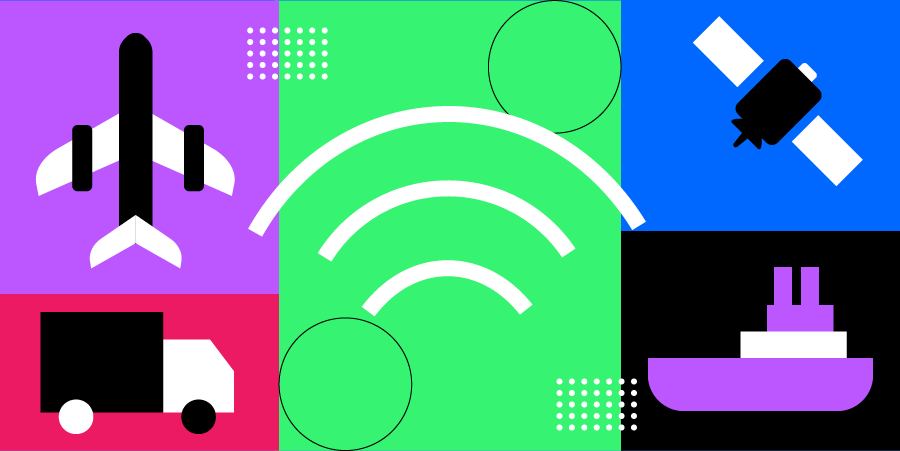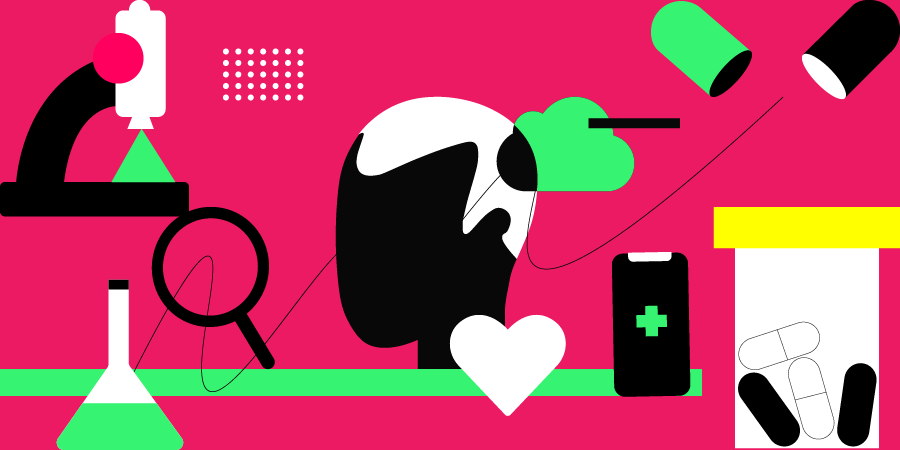
Sechs Innovationen in der pharmazeutischen Lieferkette
Die pharmazeutische Lieferkette beginnt mit Forschung und Entwicklung und dem Arzneimittel-Zulassungsprozess und endet mit der Behandlung des Patienten. Dazwischen liegen die organisatorischen, operativen und wertschöpfenden Schritte, die erforderlich sind, um das Medikament herzustellen und es an diejenigen, die es benötigen, auszuliefern. Die Arzneimittelversorgungskette ist extrem kosten- und zeitintensiv, mit inhärenten Risiken in Bezug auf Rückrufaktionen und sich ändernde Vorschriften, wie sie in unserem Whitepaper „Überwindung von Arzneimittelmangel mit fortschrittlichen Technologien“ erläutert werden. Um die Rentabilität zu steigern, müssen Gesundheitsunternehmen und die Gesundheitsbranche fortschrittliche Technologien nutzen, sodass effiziente Prozesse geschaffen und Kosten gesenkt werden können.
In diesem Beitrag werden wir uns mit den sechs wichtigsten Innovationen der pharmazeutischen Lieferkette befassen, in die es sich lohnt zu investieren:
Intelligente Robotik
Die Pharma-Lieferkette enthält zahlreiche sich wiederholende, zeitaufwändige Aufgaben: vom Befüllen von Reagenzgläsern für die Forschung bis hin zur Vorbereitung von Medikamentenbestellungen für die Auslieferung. Beispielsweise müssen Medikamentenproben gemischt, gereinigt und geschüttelt werden - einfache Aufgaben, die viel Zeit in Anspruch nehmen. Die Integration intelligenter Mechanik, wie z. B. Roboterarmen, in die bestehende Gerätschaft eines Herstellers kann einfache Aufgaben effizient erledigen und gleichzeitig den Fortschritt und Status mit anderen Systemen in Echtzeit kommunizieren. Robotik steigert nicht nur die Produktivität, indem sie bei Bedarf rund um die Uhr durchgehend arbeitet - sie ermöglicht auch dem menschlichen Personal, komplexere und hochwertigere Aufgaben zu priorisieren.
Neue Roboteranwendungen sollten vollständig in intelligente Überwachungssysteme integriert werden, damit Maschinendaten zur Leistungsverfolgung in Echtzeit verwendet werden können und das Personal sofort auf Anomalien aufmerksam gemacht wird. Unterstützende Systeme und Infrastrukturen ermöglichen es den Herstellern, die Produktion der Anlagen zu analysieren und zu optimieren und so den Wert im Laufe der Zeit zu steigern. Um die Prozessunterbrechung so gering wie möglich zu halten, müssen Unternehmen eine schrittweise Integration planen und dabei Bereiche mit den sich am häufigsten wiederholenden Aufgaben wie dem Mischen von Zutaten oder dem Abfüllen und Verpacken der Medikamente priorisieren.

Internet der Dinge (IoT)
Das IoT und das industrielle Internet der Dinge (IIoT) sind ein Ökosystem, in dem alle Geräte, Maschinen und Prozesse über ein Datenkommunikationssystem verbunden sind. Dazu gehören Laborgeräte für die Wirkstoffforschung und Maschinen, die bei der Medikamentenherstellung eingesetzt werden sowie Fahrzeuge für die Bereitstellung der Versorgung. Angeschlossene Sensoren können die Leistungsmerkmale der Geräte verfolgen und das Personal vor einem mechanischen Ausfall auf Wartungsanforderungen hinweisen. Dies ermöglicht es den Anlagen nicht nur, die Wartung zu planen und zu terminieren, wodurch Ausfallzeiten minimiert werden, sondern verhindert auch Ausgaben für routinemäßige Wartung, wenn sie nicht benötigt werden.
KI/ML und prädiktive Analytik
Die Umsetzung einer KI/ML-Strategie während der Medikamentenentwicklung kann die Markteinführungszeit für neue Medikamente deutlich verkürzen. Da der typische Lebenszyklus des Wirkstoffdesigns 10-15 Jahre dauert und Milliarden von Dollar kostet, sind Agilität und Präzision bei der Medikamentenentwicklung entscheidend. Die Beurteilung eines potenziellen Medikamentenkandidaten umfasst die Untersuchung von Millionen von Datenpunkten, was durch Fähigkeiten von KI/ML ermöglicht wird. Diese Technologie kann große Datenmengen schnell analysieren, versteckte Zusammenhänge finden und neue Ergebnisse generieren - Lösungen, die von traditionellen Ansätzen oft übersehen wurden.
Die vielleicht wichtigste Innovation - die prädiktive Analytik - nutzt statistische Modelle, um Erkenntnisse aus vergangenen, aktuellen und zukünftigen Ereignissen zu gewinnen. Der Einsatz von prädiktiver Technologie kann den Bedarf an Formel-Änderungen vorhersagen, indem künstliche Intelligenz (KI) und maschinelles Lernen (ML) auf große und mehrere Datensätze angewendet werden. So können beispielsweise Ergebnisse von kleinen Änderungen an Formeln und entsprechenden Patientenreaktionen auf der Grundlage zuvor getesteter Medikamente vorhergesagt werden. Oder Analytik-Algorithmen können Hypothesen über die Reaktionen der Teilnehmer an menschlichen Medikamentenstudien bilden, die auf ähnlich getesteten Medikamenten über Hunderte von Datensätzen basieren.
Fortschrittliche Analytik könnte das Ergebnis (EBITDA) von Pharmaunternehmen über einen Zeitraum von zehn Jahren um 45 bis 75 Prozent verbessern. – McKinsey and Company
Bestands- und Netzwerkoptimierung
Bestands- und Netzwerkoptimierung ermöglichen es Pharmaunternehmen, ein außergewöhnliches operatives Bewusstsein für alle Aspekte - nicht nur die Lagerhaltung - der Medikamentenlieferkette zu entwickeln. Sensoren und Aktuatoren werden in Einrichtungen eingesetzt, die sicher mit der Cloud oder dem Rechenzentrum verbinden. Systembenutzer können Daten sammeln, um Business Intelligence (BI) und prädiktive Analysefunktionen zu ermöglichen.
Für einen Pharmahersteller bietet dies Einblicke in Chargenschwankungen und mögliche Partikelkontaminationen. Empfindliche Medikamente, z. B. solche, die exakte Lagertemperaturen oder kurze Haltbarkeitszeiten erfordern, profitieren von der Echtzeit-Verfolgung, die Verschwendung und Mehrkosten vermeidet.
Intelligenter Transport
Diese Innovation, die oft als „intelligente Mobilität“ bezeichnet wird, konzentriert sich auf den Transport von empfindlichen Werkstoffen für die Herstellung von Medikamenten. Medikamente sind oft am meisten von Diebstahl bedroht: beim Arzneimittelhersteller, in der Apotheke oder am Bestimmungsort selbst. Um dieses Problem anzugehen, sollten Unternehmen Teile, Rohstoffe und Fertigarzneimittel von Tür zu Tür und Schritt zu Schritt verfolgen.
Transportfahrzeuge sind mit intelligenten Systemen verbunden, die aussagekräftige und in Echtzeit verfügbare Informationen über den Medikamentenstatus analysieren und liefern können. Auf diese Weise können Fachleute sofort reagieren, wenn Bedenken auftreten. Probleme können angegangen werden, bevor sie zu kostspieligen Fehlern werden.

Wearables und mobile Technologien
Labortechniker arbeiten oft unter den gefährlichsten Bedingungen. Umweltfaktoren, wie wiederholte Exposition gegenüber Chemikalien und Krankheiten, können ein ungünstiges Arbeitsumfeld schaffen, das den Fortschritt bei der Medikamentenentwicklung behindern kann. Darüber hinaus können körperliche Faktoren wie Stress und sich wiederholende Aufgaben im Stehen zu gesundheitlichen Problemen der Mitarbeiter wie Bluthochdruck oder Herzinfarkt führen.
‘Intelligente Arbeitskleidung’ - Wearables und mobile Technologien - ermöglichen es den Mitarbeitern, die übliche persönliche Schutzausrüstung (PSA) weiterhin zu verwenden. Der Vorteil sind die in der gesamten PSA platzierten internen Geräte, die kontinuierlich Umweltfaktoren wie gefährliche Chemieunfälle sowie physikalische Faktoren überwachen. Dadurch, dass der Arbeitgeber für eine gesündere Belegschaft sorgt, ermöglicht er eine bessere Einhaltung von Zeitplänen und Mitarbeiterbindung.
Einstieg
Während es heute viele technologische Innovationen gibt, steht die Pharmaindustrie vor spezifischen Fragen, die spezifische Antworten erfordern. Durch die Implementierung von Lösungen wie Robotik, Analytik, IoT und KI/ML können Pharmaunternehmen eine echte Investmentrendite erzielen und Risiken im Zusammenhang mit der Entwicklung und Produktion von Medikamenten minimieren. Innovationen wie Bestandsoptimierung, intelligente Mobilität und tragbare Technologien schützen die Menschen, die sie bedienen, und die getätigten Investitionen.

Im Verlauf der gesamten Umstellung sind Daten der Schlüssel, um aussagekräftige Erkenntnisse für das Wachstum in der Pharmaindustrie zu gewinnen. Um zu erfahren, wie unser Team aus Innovatoren und Gesundheitsexperten Kunden dabei unterstützt, den Bereich Biowissenschaften und das Gesundheitswesen zu transformieren, kontaktieren Sie SoftServe noch heute.

